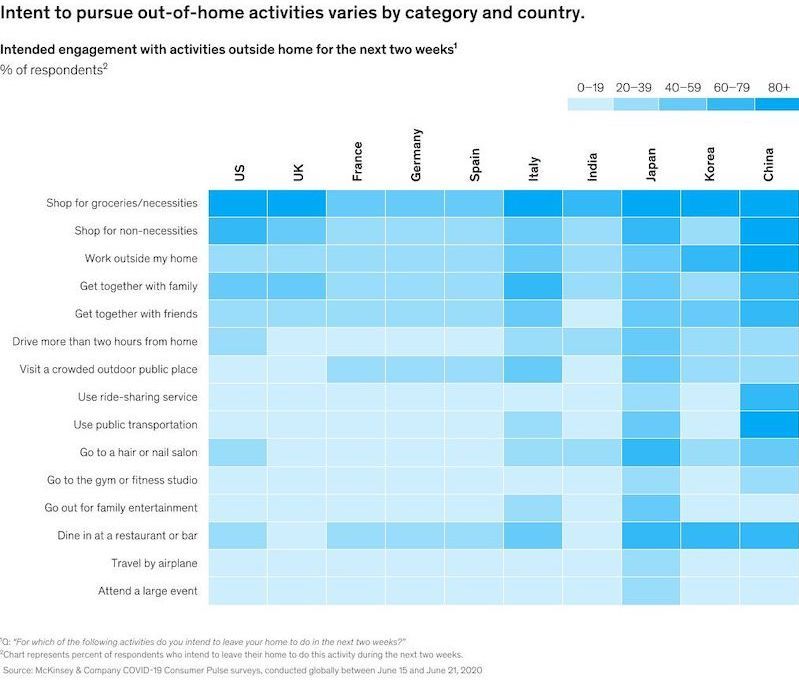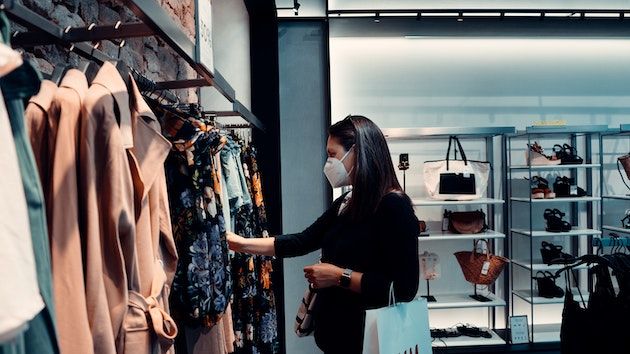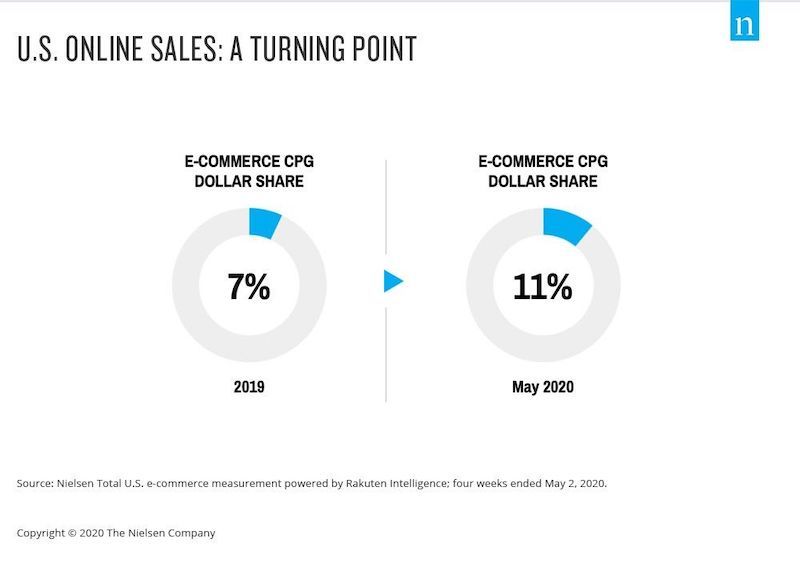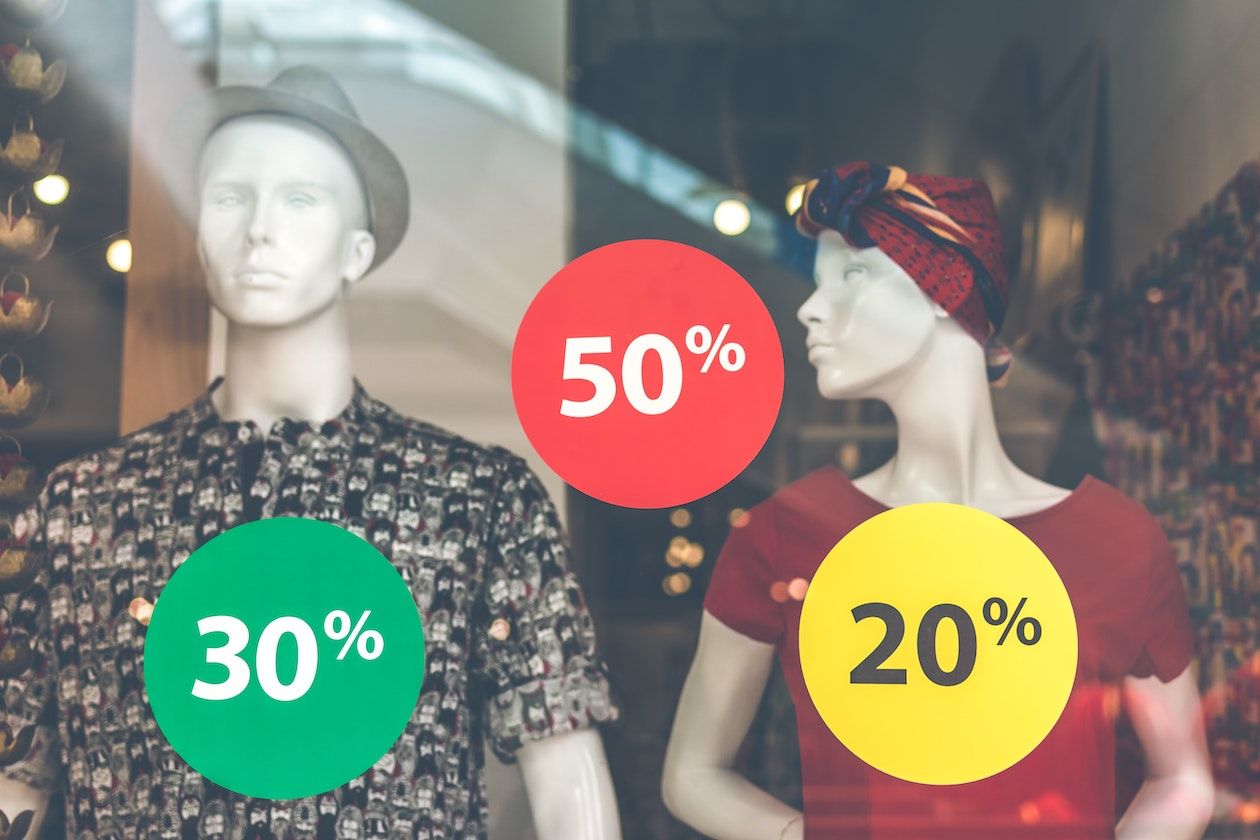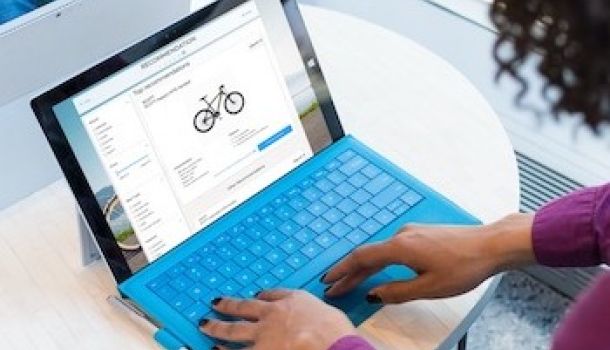Is the new consumer here to stay?
Sai Naik Nimbalkar
After a period of adjustment, the ‘new normal’ has ushered in new consumer behaviors. A report from Mckinsey suggests five consistent trends observed amongst 45 countries –
1) Consumers have become more mindful of their spending habits.
2) More consumers are using online shopping.
3) Consumers have tried new products due to supply chain disruptions.
4) They prefer to shop in stores that create a safe environment.
5) Largely, consumers do not feel entirely confident about returning to out-of-home activities, however, shopping certainly remains a priority.
Mckinsey Consumer Behavior
A more mindful consumer
In the United States, the bureau of economic analysis estimated that consumption expenditure in May 2020 increased from -12.6% to 8.2%. Although this is a considerable increase in spending, Greg Daco, chief U.S. economist at Oxford Economics stated in this barrons article that, ”…with uncertainty still elevated and virus fears resurfacing, frugal consumer behaviors should persist in the coming months and weigh on the recovery.”
Online shopping has significantly increased.
The average consumer will weigh all his options before deciding to make a purchase, and will be more cautious as there is also risk and exposure at the forefront of decision-making. Retailers and brands hence need to consider products that provide value for money for such a consumer. This may also lead to a decrease in brand preference and loyalty.
"...in May 2020, decreased from 10.8% to -4.2%, while consumption expenditure increased from -12.6% to 8.2%."
Adoption of digital channels
Although stores have opened, consumers are yet hesitant towards store visits. The presence of a store and the nature of sales interactions have changed, making way for a more hybrid sales strategy involving both online and physical stores. However, convenience is an aspect that will remain crucial for customers even in the recovery period, especially considering current phenomena such as contactless deliveries, pick-ups, social media selling, etc.
Consumers who were once unsure of online buying now welcome it, ushering in more acceptance and adoption. At the same time, brands and retailers are also trying to stay relevant to consumers who are constantly changing their preferences.
Nielson-online-shopping-report
"… retailers are reconsidering how to stay relevant to consumers who will have rapidly changing consideration sets."
Brick-and-mortar stores
Brick-and-mortar stores still remain important in terms of overall shopping experience. A consumer can visit a physical store to browse through and get more information about products in a real-world sense. Similarly, there is also the option of providing a digital advisor or an in-store solution for shop customers. A BBC article also suggests that customers tend to spend more money in-store then they do online as they see more and are caught up in a kind of ‘shopping euphoria.’
But one can argue that this is more valid in the context of having the physicality and mobility available in the store experience. E.g. when one decides to spend a leisurely afternoon in a mall. This was a common browsing pattern and consumers will in all probability adapt to a new behavior.
Consumers could find better offers online.
At the moment, there is also an abundance of sales and discounts, but a consumer could potentially find a better deal online or combine both these channels e.g. by purchasing online and picking up the product in the store. Hence, a functional shopper would have no barriers in online shopping while a leisurely one would perhaps no longer have the intrinsic motivation to step into a store.
"...customers tend to spend more money in-store then they do online as they see more and are caught up in a kind of ‘shopping euphoria."
Website experience
Online shopping is on the rise and will continue to be a source of convenience for customers. Retailers and brands naturally need to provide an online experience that is helpful, interactive and easy.
According to this Harvard business report, “Customers will no longer tolerate sub-par digital shopping experiences like they may have before the crisis. Retailers have to make sure their sites are mobile-responsive, offer integrated services such as ‘buy online pick up in store’ (BOPIS), and deliver a consistent, reliable digital experience across devices and channels.”
"Customers will no longer tolerate sub-par digital shopping experiences like they may have before the crisis."
Consumers are not expecting a virtual replication of the in-store environment, but they do expect the same amount of expertise and care. Our Guided Selling tools like Product Guides have this exact ability where existing in-store knowledge can be utilized to give the best advice to your online customers. Guided Selling provides customers with the necessary reasoning and recommends the best-suited products. Hence, this increases their willingness to make a purchase. Guided Selling-enabled Product Guides are informative, convenient and can deliver a seamless website experience for your customers.
